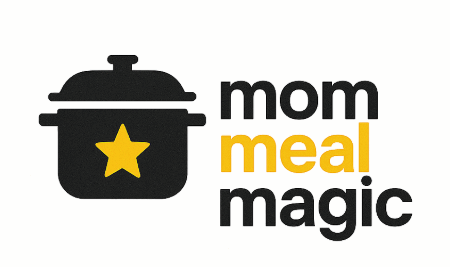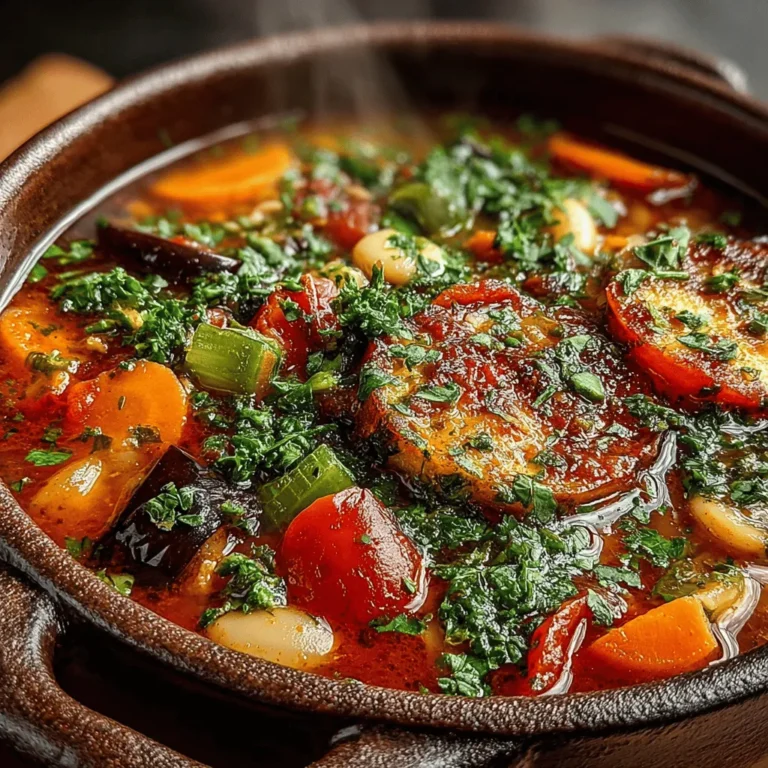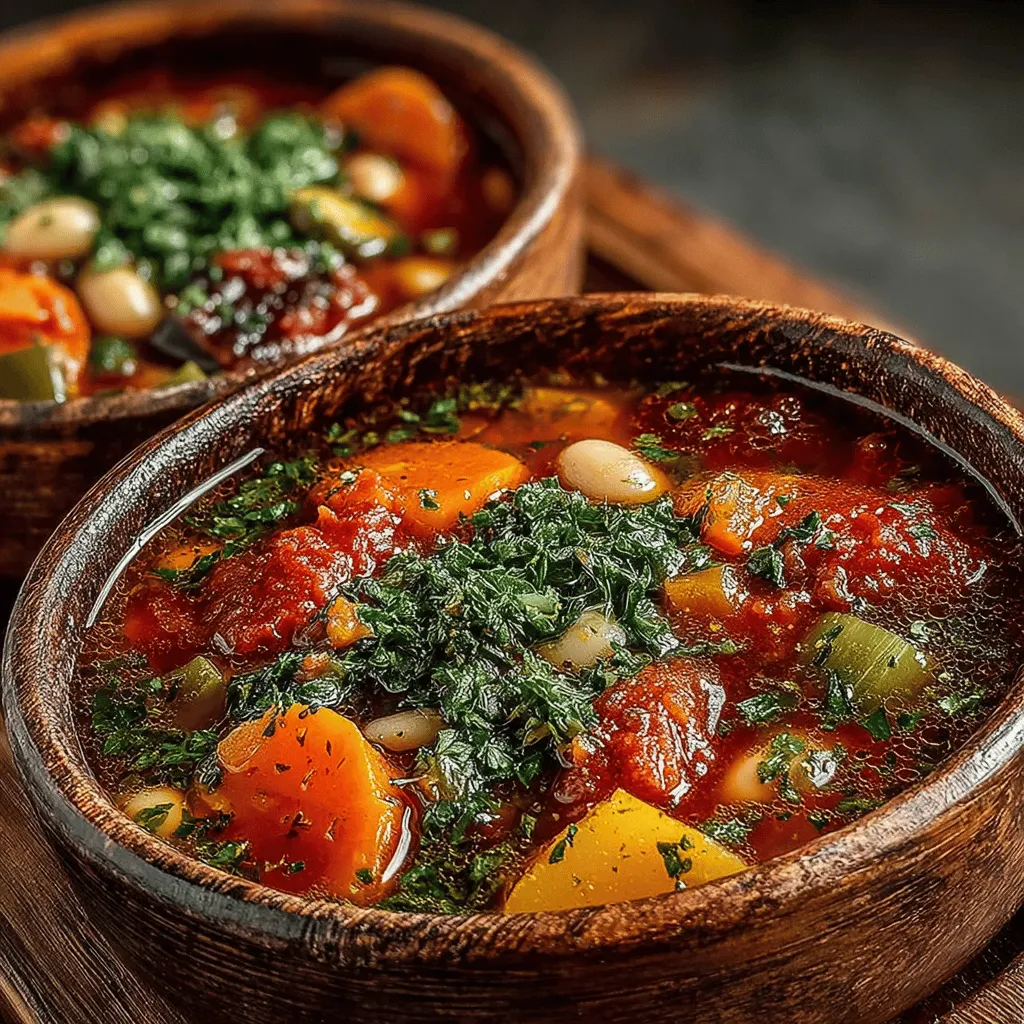Hearty Eggplant & Bean Soup: A Wholesome Comfort in a Bowl
In today’s fast-paced world, the importance of healthy, hearty meals cannot be overstated. As we navigate our busy lives, it becomes essential to find dishes that not only nourish our bodies but also provide comfort and satisfaction. One such dish that ticks all the boxes is the Hearty Eggplant & Bean Soup. This delightful recipe combines wholesome ingredients to create a delightful medley of flavors and textures that warm both the body and soul.
Eggplant, the star of this soup, is not just a versatile vegetable; it also packs a nutritional punch. Rich in vitamins, minerals, and antioxidants, eggplant supports heart health, aids in digestion, and contributes to a balanced diet. Its unique texture allows it to absorb flavors beautifully, making it an ideal ingredient for soups and stews. By incorporating eggplant into your meals, you’re not only treating your taste buds but also providing your body with essential nutrients.
What makes this soup truly remarkable is its versatility. Whether it’s a chilly winter evening or a cool summer night, a warm bowl of Hearty Eggplant & Bean Soup is always welcome. This dish can be enjoyed as a light lunch or a comforting dinner, appealing to everyone from busy professionals to families looking for a satisfying meal. Furthermore, the recipe is incredibly easy to prepare, utilizing common pantry staples that you likely already have on hand.
Understanding the Ingredients
A successful soup relies on a harmonious blend of ingredients, each contributing to the overall flavor and nutritional profile of the dish. Let’s take a closer look at the key components of this Hearty Eggplant & Bean Soup and their health benefits.
Eggplant: At the heart of this recipe, eggplant is a low-calorie vegetable that offers a wealth of nutrients. It’s high in dietary fiber, which promotes digestive health, and contains several important vitamins and minerals, including Vitamin C, Vitamin K, and potassium. Eggplant is also rich in antioxidants, particularly nasunin, which helps protect cells from damage caused by free radicals.
Cannellini Beans: These creamy white beans are a fantastic source of plant-based protein and fiber, making them a perfect addition to any vegetarian soup. Cannellini beans not only enhance the soup’s texture but also keep you feeling full longer, aiding in weight management. Additionally, they are rich in iron, folate, and magnesium, contributing to overall health and well-being.
Diced Tomatoes: This ingredient is packed with lycopene, a powerful antioxidant known for its heart-protective properties. Diced tomatoes add a vibrant flavor and a touch of acidity that balances the richness of the eggplant and beans. They also provide a good source of vitamins A and C, further boosting the nutritional value of the soup.
Vegetable Broth: As a low-calorie flavor enhancer, vegetable broth forms the base of this soup, infusing it with depth and richness without unnecessary calories. It’s an excellent way to incorporate additional nutrients, especially if you choose a broth made from a variety of vegetables.
Aromatic Vegetables: The foundational vegetables in this recipe—onions, garlic, carrots, and celery—are key players in developing the soup’s flavor. Onions and garlic are known for their immune-boosting properties, while carrots provide beta-carotene, which is essential for eye health. Celery adds a refreshing crunch and is also a source of vitamins K and C.
Spices: To elevate the flavor profile of the soup, a combination of herbs and spices is used. Oregano and thyme lend their earthy tones, while cumin adds a warm, nutty flavor that complements the other ingredients beautifully. A hint of red pepper flakes introduces a subtle heat, making the soup exciting without overwhelming the palate.
Preparation Steps for the Perfect Soup
Now that we’ve explored the ingredients, it’s time to roll up our sleeves and get into the preparation steps for crafting the perfect Hearty Eggplant & Bean Soup. The key to a successful soup lies in the meticulous preparation of the ingredients to ensure even cooking and optimal flavor.
1. Preparing the Ingredients: Start by gathering all your ingredients. Wash the eggplant thoroughly, then cut it into bite-sized cubes. To reduce bitterness and excess moisture, sprinkle the diced eggplant with salt and let it sit for about 15 minutes. This process, known as sweating, draws out water and helps the eggplant maintain its shape during cooking.
2. Dicing and Chopping: While the eggplant is draining, take the time to finely dice the onions, garlic, carrots, and celery. A uniform cut is essential for even cooking, so aim for similar-sized pieces. This will ensure that every bite of your soup is perfectly balanced, with each ingredient contributing to the overall flavor.
3. Sautéing Vegetables: In a large pot or Dutch oven, heat a couple of tablespoons of olive oil over medium heat. Once the oil is shimmering, add the chopped onions and garlic first. Sauté them for about 3-4 minutes until they become translucent and fragrant. This step is crucial as it lays the flavor foundation for the soup.
4. Building Flavor: Next, add the diced carrots and celery to the pot, stirring occasionally for another 5 minutes. The goal here is to soften these vegetables and allow their natural sweetness to develop. As they cook, the aromas will fill your kitchen, inviting everyone to gather around.
5. Incorporating Eggplant: After the aromatic vegetables have softened, rinse the salted eggplant cubes under cold water to remove excess salt and bitterness. Pat them dry with a clean kitchen towel, then add them to the pot. Stir everything together, allowing the eggplant to mingle with the other vegetables for about 5-7 minutes. This step helps the eggplant absorb the flavors of the onions and garlic, enhancing the overall taste of your soup.
As you advance through these initial steps, you will begin to see how each component plays a vital role in creating a comforting and flavorful bowl of soup. The key is to take your time and let the ingredients shine, setting the stage for a dish that is as nourishing as it is satisfying. Stay tuned for the next part of this recipe, where we will explore the remaining steps to complete this hearty eggplant and bean soup masterpiece.
Incorporating Eggplant: Tips for Achieving the Right Texture
Eggplant is a crucial ingredient in this Hearty Eggplant & Bean Soup, bringing a creamy texture and rich flavor that beautifully complements the beans. To achieve the right texture with your eggplant, start by selecting firm, glossy specimens without any blemishes. Before cooking, it’s beneficial to salt the eggplant. This process, known as “sweating,” helps to draw out excess moisture and bitterness from the eggplant. Simply slice the eggplant, sprinkle it with salt, and let it sit for about 30 minutes. Afterward, rinse and pat the slices dry. This will enhance the eggplant’s flavor and ensure it becomes tender without becoming mushy during cooking.
When adding the eggplant to the soup, cut it into uniform cubes to ensure even cooking. Sautéing the eggplant in olive oil before incorporating it into the soup not only adds flavor but also helps to caramelize the vegetable, enhancing its natural sweetness.
Spice Infusion: How to Properly Release Spice Aromas
The aromatic spices you select for your Hearty Eggplant & Bean Soup play a pivotal role in elevating its flavor profile. To properly release the aromas of spices, it’s best to add them at the right moment during the cooking process. Start by heating a tablespoon of olive oil in your pot, then add finely chopped onions, garlic, and ginger. Once they are softened and fragrant, add your spices—commonly used options include cumin, coriander, and smoked paprika—allowing them to toast for a minute or two. This technique not only releases essential oils from the spices but also creates a fragrant base that infuses the entire soup with flavor.
Building Flavor in the Soup
Importance of Layering Flavors Through the Cooking Process
Layering flavors is the cornerstone of creating a well-balanced soup. Begin by sautéing your base ingredients—onions, garlic, and ginger—as mentioned earlier. After these ingredients have softened, incorporate your eggplant, allowing it to sauté for a few minutes to absorb flavors. Then, add diced tomatoes and vegetable broth, bringing everything to a simmer. This gradual addition of ingredients allows each to contribute its unique flavor to the broth, creating depth and complexity.
How to Balance Seasoning with Salt and Pepper
When it comes to seasoning your soup, balance is key. Begin by adding a moderate amount of salt and pepper when you add the broth, and taste as you go. Remember that beans and tomatoes have their own natural flavors, which will also contribute to the overall seasoning. After the soup has simmered for a while, taste again and adjust as necessary. A little extra salt can enhance the flavor significantly, but be careful not to overdo it.
Techniques for Adjusting Soup Thickness: Mashing Beans vs. Leaving Them Whole
The thickness of your soup can be adjusted according to personal preference. For a creamier texture, consider mashing a portion of the beans with a potato masher or blending a small amount of the soup in a blender before returning it to the pot. This will create a thicker, heartier consistency. Alternatively, if you prefer a chunkier soup, leave the beans whole, allowing them to provide texture alongside the tender eggplant.
The Role of Simmering in Developing Depth of Flavor
Simmering is vital for allowing flavors to meld together. After everything has been added to the pot, reduce the heat and let the soup simmer gently for at least 30 minutes. This process not only softens the ingredients but also deepens the flavors, allowing them to combine harmoniously. The longer you simmer, the more complex the flavors will become, so if time allows, consider letting it simmer for an hour or more for an even richer taste.
Serving Suggestions and Garnishes
Ideas for Serving the Soup: Bowl Presentation Tips
Presentation can elevate your soup from simple to stunning. Serve your Hearty Eggplant & Bean Soup in bowls that showcase the vibrant colors of the ingredients. You can ladle the soup into rustic bowls for a cozy vibe or use elegant dinnerware for a more sophisticated touch. A drizzle of good-quality olive oil on top before serving can add a glossy finish and enhance the soup’s flavor.
Importance of Garnishing with Fresh Herbs: Basil or Parsley
Garnishing your soup with fresh herbs not only adds a pop of color but also enhances the flavor profile. Fresh basil or parsley are both excellent choices to sprinkle on top just before serving. They provide a fresh contrast to the rich, hearty soup and can brighten the overall taste, making each spoonful delightful.
Suggested Accompaniments: Bread or Salad Pairings to Complement the Soup
Pairing your soup with complementary sides can enhance the overall meal experience. A crusty loaf of bread, such as a rustic sourdough or whole-grain baguette, is perfect for dipping into the soup. Alternatively, a fresh green salad dressed with a light vinaigrette can provide a refreshing balance to the richness of the soup. Consider adding seasonal vegetables or a grain salad for a filling, well-rounded meal.
Nutritional Information
Breakdown of Nutritional Content Per Serving
This Hearty Eggplant & Bean Soup is not only delicious but also packed with nutritional benefits. Each serving (approximately 1.5 cups) contains:
– Calories: 250
– Protein: 12g
– Fiber: 10g
– Vitamins: High in vitamins A, C, and K
– Minerals: Good source of iron and potassium
Discussion on Dietary Preferences: Vegan and Gluten-Free Aspects of the Recipe
This recipe is entirely plant-based, making it suitable for vegans and vegetarians alike. Additionally, it is naturally gluten-free, as it does not contain any wheat-based ingredients. This makes it an ideal option for those with dietary restrictions, ensuring everyone can enjoy a warm bowl of nourishing soup without worry.
Conclusion
The Hearty Eggplant & Bean Soup stands out as an appealing dish that combines comfort, nutrition, and flavor. Its rich texture and deep flavors make it a perfect meal for any season, whether enjoyed on a chilly winter evening or as a light dinner in warmer months. The versatility of this recipe allows for experimentation with various seasonal vegetables, encouraging creativity in the kitchen.
As you prepare this soup, take the time to savor the process of home cooking. The act of creating a meal from scratch not only nourishes the body but also fosters a sense of well-being and satisfaction. Encourage family and friends to join you in the kitchen for a fun, collaborative cooking experience. With each bowl served, you can share the joy of wholesome, home-cooked meals that bring people together and nourish the soul. Try out this recipe today, and discover how a simple soup can warm both the heart and home.



